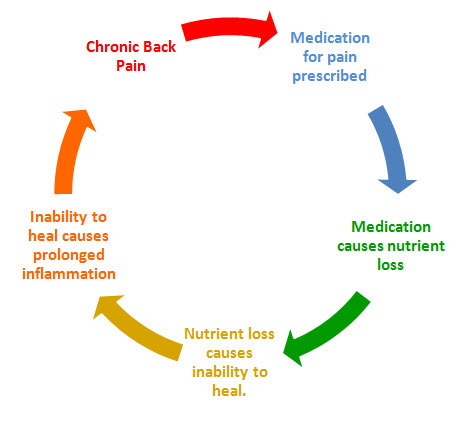Gluten Free on Fox News
Recently Fox News had a week long special about gluten sensitivity. One of the episodes discussed the inclusion of other grains as playing a role in disease progression. Many celiac awareness groups were outraged about the report because it included corn, rice, and other grains as part of the problem those with celiac disease face. Melissa Wilson did a fantastic job on the story. Unfortunately, Fox management decided to pull the story from their website due to the pressure of the under educated. Two of the news stories are available for your viewing below. Also, below is a response letter written to those groups that pressured Fox to remove the story. So far not one of these groups has bothered to conact me or Fox to discuss this in a civil manor.
Gluten Sensitivity Response for Fox News:
Many people today are going on gluten free diets. You can find extensive gluten free sections in Kroger, HEB, and Whole Foods. Gluten has been in the national spot light receiving recognition on Discovery Health, CNN’s Larry King, Oprah, David Letterman, The View, Good Housekeeping Magazine and more. There is even a “dummies book” available for those with gluten sensitivity.1
So What is Gluten?
Before exploring gluten sensitivity we should first investigate gluten. Gluten is a protein found in grain. It is found in wheat, barley, rye, and oats, as well as processed foods derived from these grains. Breads, cereals, and pastas are rich in gluten. Other foods and/or food additives can be derived from gluten containing grains. Examples include soy sauce, gravies, soups, whiskey, and modified food starch. Gluten is composed of two smaller proteins – 1. Prolamine, 2. Glutelin. Prolamine is the most studied piece of gluten in the medical literature. Different grains have different types of prolamines. Gliadin is the name of the prolamine found in wheat. It has been studied as a cause of celiac disease. Currently there is a gap in the scientific literature regarding prolamines contained in grains. However, newer research points out that different gluten produce variable immune reactions in different people.19 Additionally, some research suggests that the glutens found in other grains can also create intestinal inflammation in patients with celiac disease. That being said, it is recommended that you pay attention to all grains (i.e. corn, rice, etc) as they may also cause problems.2-10 Below is a diagram of different select grains, the names of their corresponding prolamines, and their percentage by weight of protein.
The Prolamine Fraction of Gluten Proteins in Select Grains:
| Grain | Prolamine | % Total Protein |
| Wheat | Gliadin | 69 |
| Rye | Secalinin | 30-50 |
| Oats | Avenin | 16 |
| Barley | Hordein | 46-52 |
| Millet | Panicin | 40 |
| Corn | Zien | 55 |
| Rice | Orzenin | 5 |
| Sorgum | Kafirin | 52 |
Originally, research about gluten revolved around wheat, barley, rye, and oats and their association with celiac disease. This association is misleading because it suggests that gluten sensitivity and celiac disease are the same entity. However; as evidence builds, doctors are finding that patients can have gluten sensitivity in the absence of celiac disease.9-17 In the last several years gluten free diets have become increasingly popular because so many ill people respond favorably to them. Soon to be published data performed by Keneth Fine, M.D., former medical director, gastrointestinal physiology laboratory at Baylor University Medical Center and current Medical Director of Enterolab estimates that approximately 81% of Americans have genetic predisposition to gluten sensitivity.13
So what is gluten sensitivity?
It depends on who you ask. Many people use the term gluten sensitivity interchangeably with celiac disease (an autoimmune intestinal disorder). Some call gluten sensitivity a food allergy or intolerance. Both are correct to some degree. Gluten sensitivity causes celiac disease, but not all people with gluten sensitivity develop celiac disease. This is where the problem in traditional diagnosis can occur. The only way to confirm whether or not a person has celiac disease is to perform an intestinal biopsy. If the results reveal villous atrophy (flattening of the intestinal folds) then celiac disease is diagnosed. If the results are negative, then both celiac disease and gluten sensitivity may be dismissed. Newer research is finding that gluten sensitivity can exist independently without causing celiac disease. There are more than 190 different disease conditions, syndromes, and symptoms that have been linked to gluten sensitivity in the medical literature.11-17 Some common conditions include thyroid disorders, seizure disorders, vertigo, osteoporosis, irritable bowel syndrome, and PCOS. There have been two proposed names in the medical literature for this classification of gluten sensitivity. 1. Non-Celiac Gluten Intolerance13,18 and 2. Gluten Syndrome.17
Diagnosing Gluten Sensitivity & Celiac Disease
The purpose of the Fox news story was to help educate the general public of the emerging research that gluten sensitivity and celiac disease are not the same entity. It is possible to have gluten sensitivity and not have celiac disease. It is also possible that grains other than the traditional ones associated with celiac disease can play a role in disease progression of those with gluten sensitivity. You should seek the advice of your health care practitioner should you have further questions pertaining to the diagnosis and treatment of gluten sensitivity.
A final thought –
Several years ago, many Americans played an unknowing role in the social experiment known as the Atkin’s diet. This diet, largely devoid of grain provided many with better health through weight loss and reduction of many generalized symptoms of poor health. However, there were also those whose health did poorly on the Atkin’s diet. People are different and unique. Renowned Nobel Prize winning scientist, Roger Williams, wrote a book called Biochemical Individuality examining these individual differences. Bottom line: one diet is not right for everyone. Because going on a gluten free takes a great deal of education and commitment, it is recommended that proper testing be performed to identify whether the diet is right for you. Remember going gluten free is not a trendy diet; it is a permanent lifestyle that should be taken very seriously as even small amounts of gluten exposure can cause problems. I will leave you with a final thought on gluten and grains. When farmers want their cows and pigs to gain weight before going to market, they feed them more grain. In the past 100 years, grain consumption has dramatically increased, paralleling a rise in the incidence of heart disease, diabetes, obesity, and cancer. Despite the above facts many doctors and dieticians continue to blindly prescribe “heart healthy” diets high in grain. Many continue to dismiss the overwhelming scientific and anecdotal evidence. Gluten sensitivity does not “belong” to celiac disease only. I will not be deterred by antiquated evidence. I will not dismiss 10 years of clinical experience working with sick, gluten sensitive patients both with and without celiac disease. The earth was flat until it was round…
References:
- Korn, Danna. Living Gluten-Free for Dummies. Wiley Publishing 2006.
- Kristjansson G, Hogman M, Venge P, Hallgren R. Gut mucosal granulocyte activation precedes nitric oxide production: studies in celiac patients challenged with gluten and corn. Gut 2005;54: 769-774.
- Vainio E, Varjonen E. Antibody response against wheat, rye, barley, oats, and corn: comparison between gluten-sensitive patients and monoclonal antigliadin antibodies. Int Arch of Allergy and Immun 1995;106 (2): 134-38.
- Varionen E, Vainio E, Kalimo K, et al. Skin prick test and RAST responses to cereals in children with atopic dermatitis. Characterization of IgE binding components in wheat and oats by an immunoblotting method. Clin Exp Allergy 1995;25(11): 1100-7.
- Kieffer M, Frazier PJ, Daniels NW, Coombs RR. Wheat gliadin fractions and other cereal antigens reactive with antibodies in the sera of celiac patients. Clin Exp Immunol 1982;50(3): 651-60.
- Troncone R, Auricchio S, De Vincenzi M, et al. An analysis of cereals that react with serum antibodies in patients with celiac disease. J Pediatr Gastroenterol Nutr 1987;6(3):346-50.
- Polizzi A, Finocchiaro M, Parano E, et al. Recurrent peripheral neuropathy in a girl with celiac disease. J Neurol Neurosurg Psychiatry2000;68:104-105.
- Mehr S, Kakakios A, Frith K, et al. Food Protein Induced Enterocolitis Syndrome: 16 year experience. Pediatrics 2009;123(3):e459-3464.
- Mehr S, Kakakios AM, Kemp AS. Rice: a common and severe cause of food protein induced enterocolitis syndrome. Arch Dis Child2009;94(3):220-3.
- Sandhu JS, Fraser DR. Effect of dietary cereals on intestinal permeability in experimental enteropathy in rats. BMJ 1983;24(9): 825-30.
- Marsh MN. The small intestine: mechanisms of local immunity and gluten sensitivity.Clin Sci (Lond). 1981 Nov;61(5):497-503. Review.
- Hadjivassiliou M, Williamson CA, Woodroofe N. The immunology of gluten sensitivity: beyond the gut. Trends Immunol. 2004 Nov;25(11):578-82.
- www.enterolab.com
- Libonati, Cleo J. Recognizing Celiac Disease. GFW Publishing Jan 2007.
- http://www.gluten.net/about.htm
- Hadjivassiliou M. Gluten Sensitivity: a many headed hydra. BMJ 1999;318:1710-1.
- Ford, Rodney. The Gluten Syndrome. RRS Global Ltd publishing. Sept 2007.
- http://www.celiac.com/articles/1101/1/Gluten-Sensitivity-A-Gastroenterologists-Personal-Journey-Down-the-Gluten-Rabbit-Hole-by-Dr-Scot-Lewey/Page1.html
- Konic-Ristic K, Dodig D, Krstic R, et al. Different levels of humoral immunoreactivity to different wheat cultivars gliadin are present in patients with celiac disease and in patients with multiple myeloma. BMC Immunology 2009;10:32.
Read my Focus on Health Articles about gluten sensitivity:
















